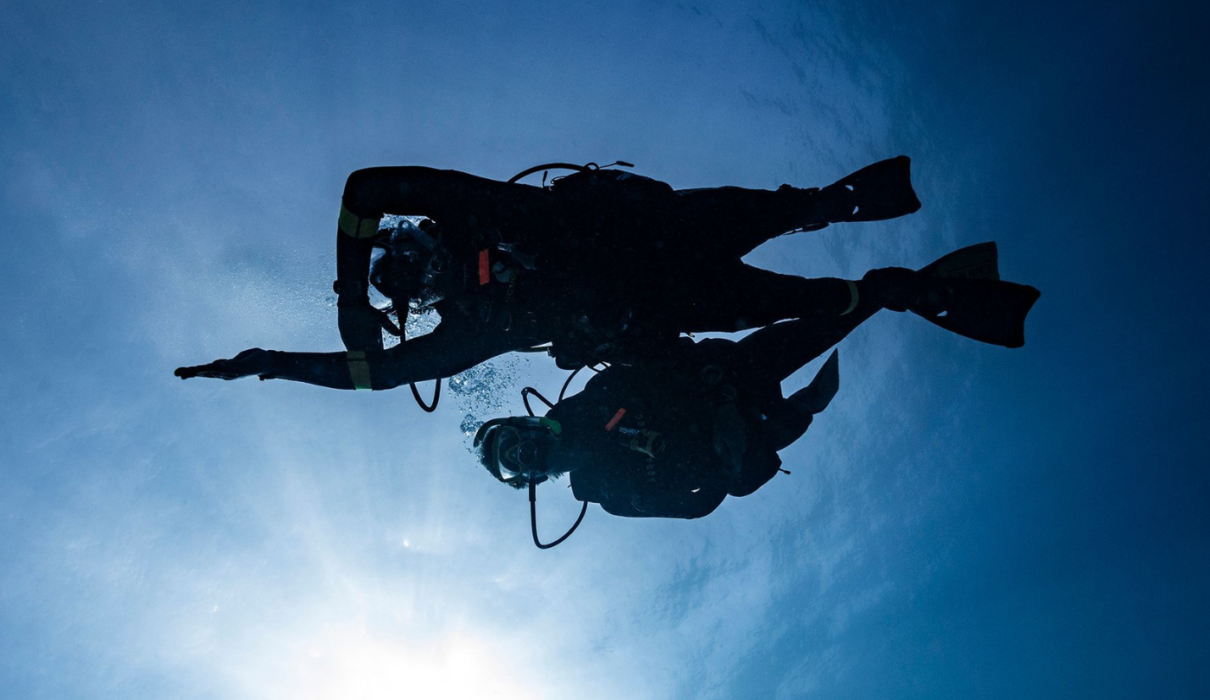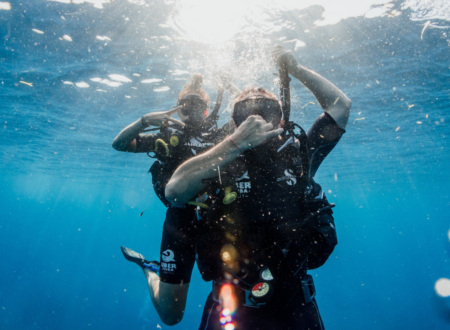In the vast depths of the ocean, many dream of exploring the wonders beneath the surface. If you’re reading this, chances are you’re ready to turn that dream into a reality. And what better way than the PADI Open Water Course? Let’s Dive into this 4-day journey, step by step.
Before diving into the practical training, all participants will receive access to PADI’s e-learning platform once they register for the course. This flexible online module allows learners to study at their own pace, ensuring they have a solid grasp of the theoretical aspects of scuba diving. The time taken to complete this module varies among individuals, depending on their commitment and pace of learning. Nevertheless, it ensures that everyone starts the practical sessions with a deep understanding of scuba diving essentials.
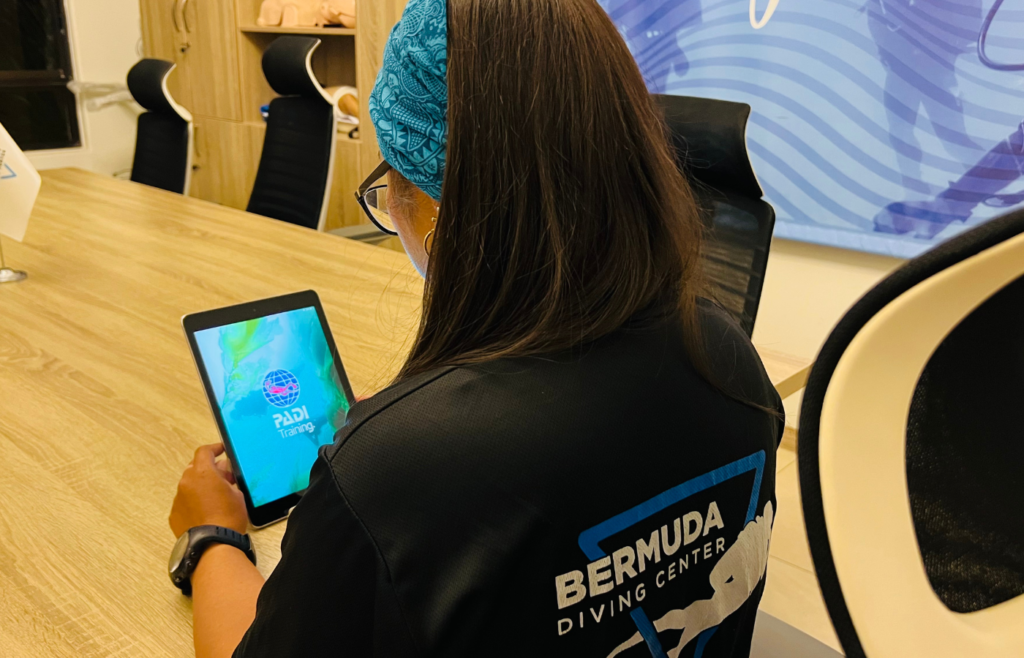
Introduction & Theory Recap
Your PADI adventure begins with a solid foundation in dive theory. Provided with the knowledge from your e-learning, you’ll take an assessment on day one. This isn’t just a test; it’s a chance for your instructor to review your understanding and for you to clear up any questions that needs to be clarified. You’ll also demonstrate your swimming skills, covering a distance of 200 meters in the pool, followed by a float test for 10 mins. Don’t worry if you’re not an Olympic swimmer—average swimming ability is perfectly fine to get you started on your diving journey. Swimming skills are required for your own safety precautions.
Your diving journey begins with understanding the basic principles of scuba diving as we explained above. This day is mostly about theories – but don’t yawn just yet! These essentials ensure your safety and enjoyment underwater.
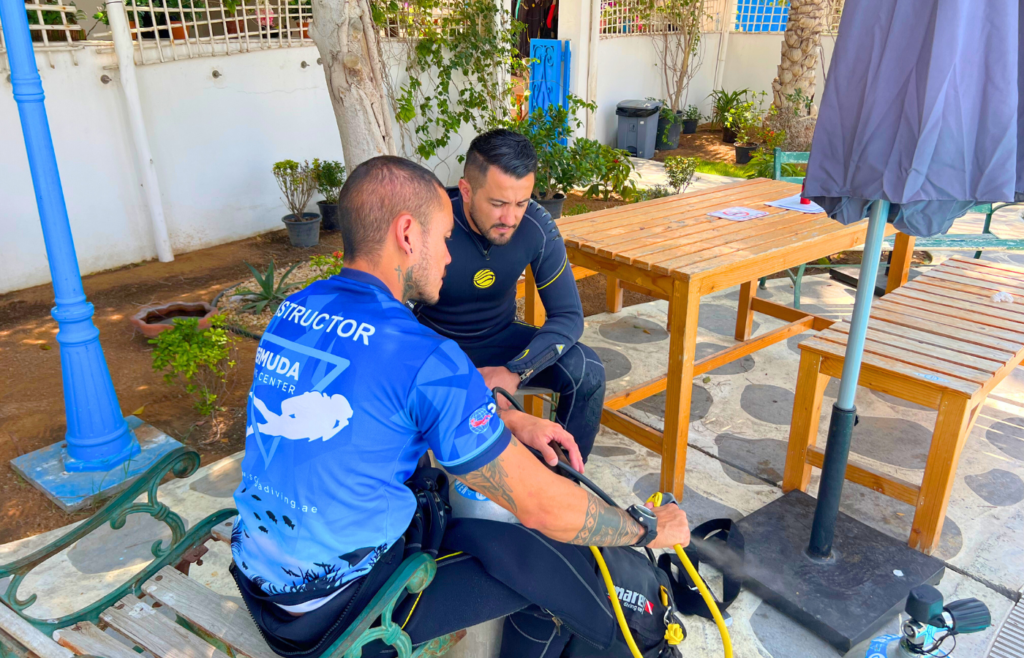
First Day of Confined Water (Pool) Training
This is where you’ll get used to your dive gear and start learning the essential skills in a calm, controlled environment. Your instructor will demonstrate each technique, from how to set up your equipment to clearing water from your mask, ensuring you understand the basics of safe diving.
In the pool, you’ll have the opportunity to go over these skills multiple times, which is crucial for building your diving confidence. There’s no rush or waves to worry about; just clear, still water that’s perfect for beginners. You’ll work on regulating your breathing, managing your buoyancy, and becoming comfortable with being underwater.
By the end of your session, you’ll be more familiar with the equipment and the fundamental skills required for scuba diving.
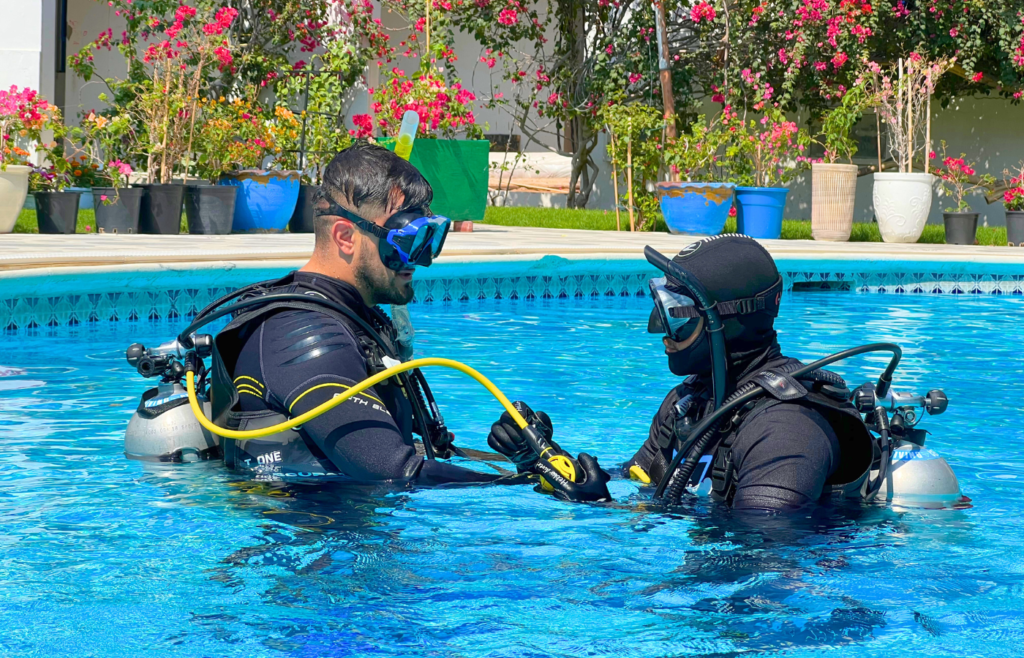
Second Day of Confined Water (Pool) Training
As you enter Day 2 of your PADI Open Water Course, you’ll continue your pool training with a focus on fine-tuning your balance and buoyancy control. This is a crucial step in your development as a diver, as these skills are key to become a efficient and responsible diver.
During this session, you’ll dive deeper into the pool to train maintaining neutral buoyancy. Your instructor will provide hands-on guidance to help you learn how to hover effortlessly and adjust your buoyancy on the fly. You’ll practice ascending and descending with control and precision, ensuring you feel comfortable and in charge of your movements in the water.
Repetition is the mother of skill, and today’s repeated exercises will help to master these abilities. You’ll leave the pool with a greater sense of control, ready to take on the open waters with confidence. The goal is to make sure that, by the end of the day, you’re not just performing the skills but starting to feel like a real diver.
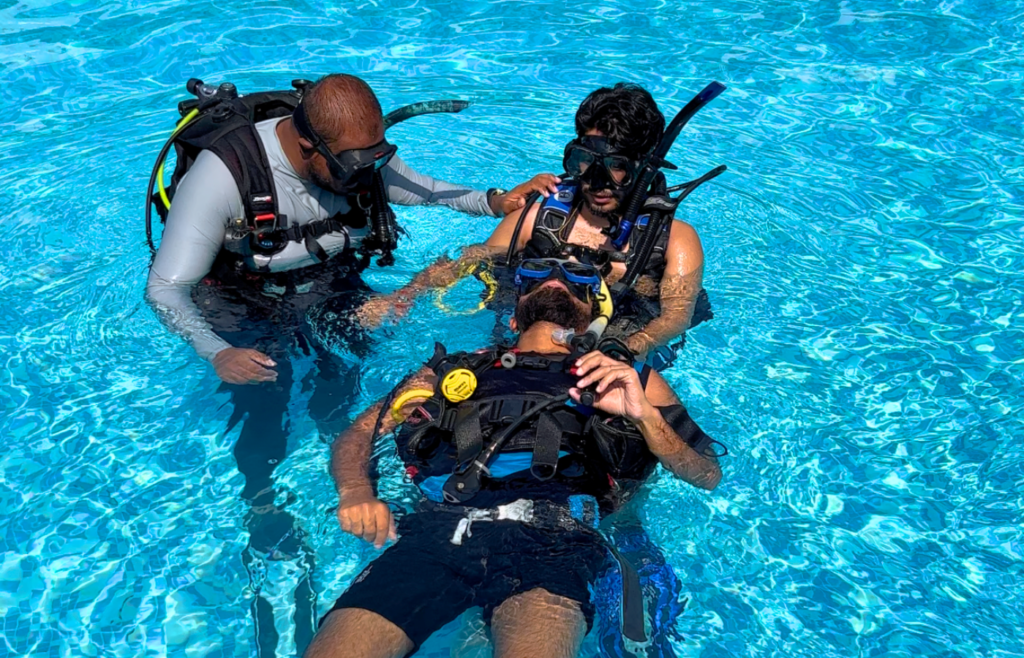
Day 3: Open Water Dive 1 and 2
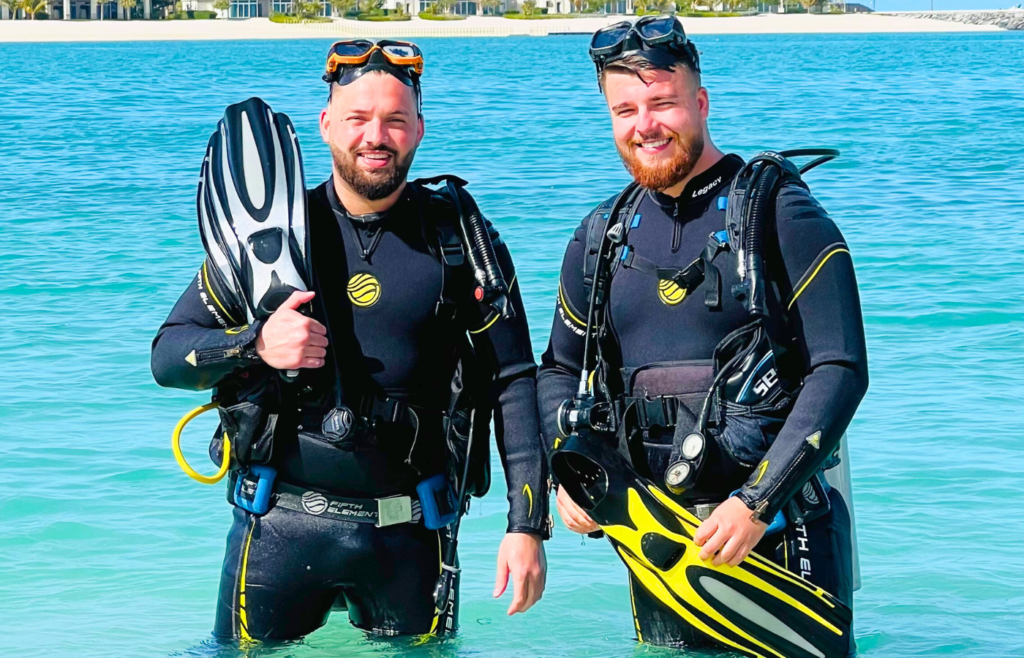
Day 3 marks a significant milestone in your PADI Open Water Course as you transition from the pool to the open sea with Open Water Dives 1 and 2. Before you take the dive, you’ll gear up and go through the essential pre-dive rituals.
- Suiting up in your scuba gear confidently.
- Performing a thorough pre-dive safety check with your buddy.
- Refreshing your memory on hand signals to communicate underwater.
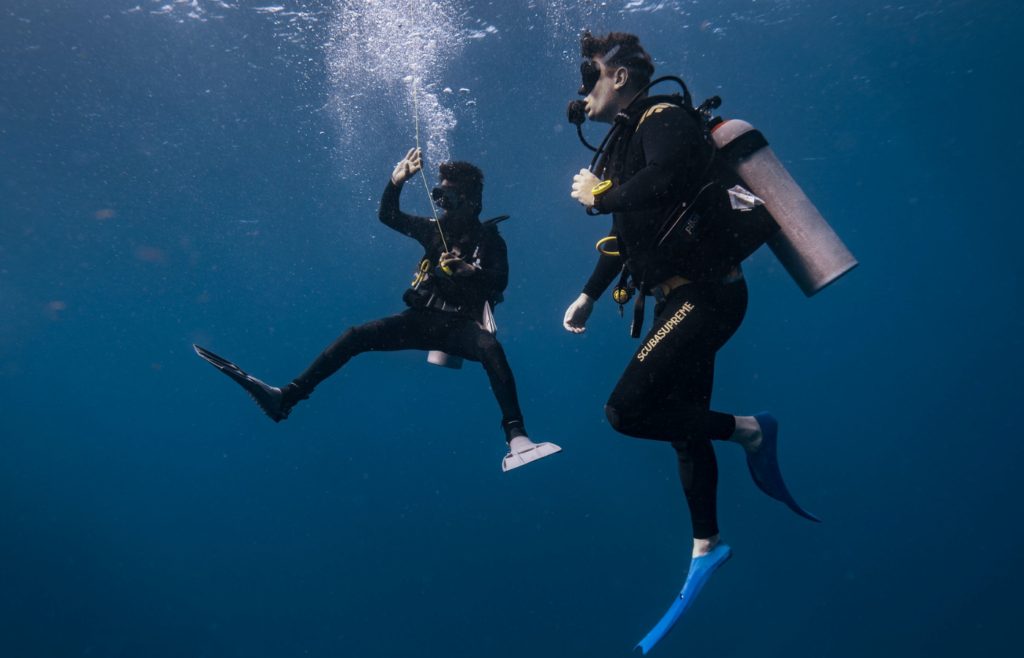
Open Water Dive 1: The First Ocean Adventure
With all checks done, you’ll ease into the water for a controlled descent, using a line or following the bottom’s slope. At a comfortable depth, you’ll conduct a trim check to fine-tune your position in the water, clear a partially flooded mask, and practice regulator recovery and clearing. It’s not all work though—there will be ample opportunity to take in the sights of the dive site under the watchful eye of your instructor, before a well-managed ascent concludes your dive.
Open Water Dive 2: Diving Deeper into Skills
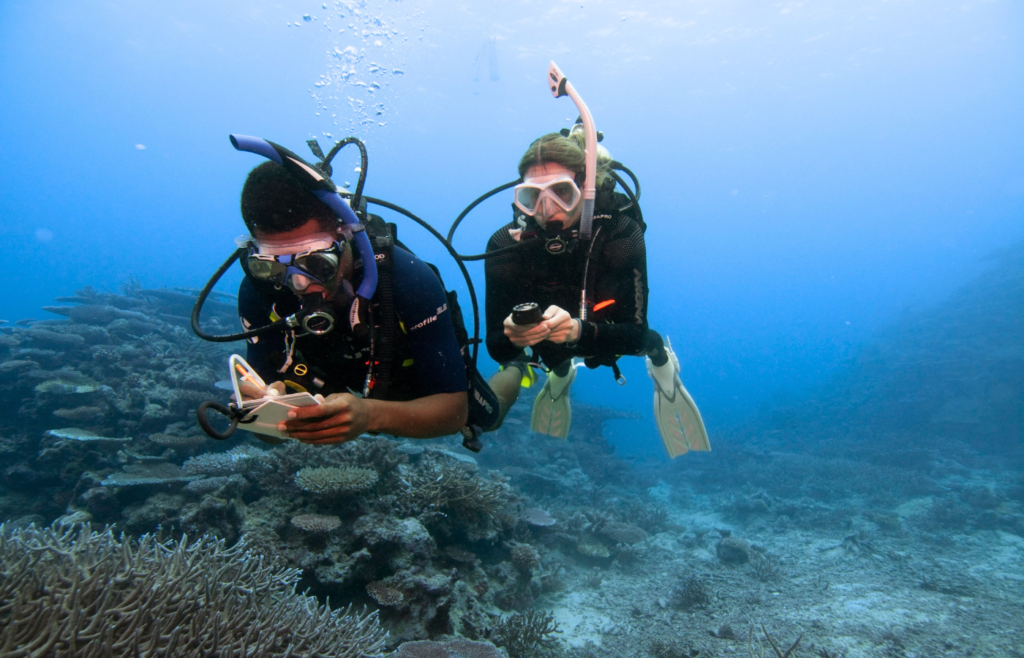
After building on the foundation of Dive 1, you’ll now take on more responsibility such as Planning your dive with the help of a dive computer or RDP, Inflating your BCD orally at the surface, preparing for descent, Putting on your scuba equipment with practiced ease underwater.
Then, the focus shifts to perfecting essential skills:
- Clearing a fully flooded mask at depth, maintaining calm and control.
- Recovering and clearing your regulator, essential for uninterrupted breathing.
- Simulating an out-of-air situation and safely using an alternative air source with your buddy.
- Ascending cooperatively with an alternate air source, ensuring both divers surface safely.
Following the skills session, you’ll have time to explore, keeping a close eye on your air supply and your dive buddy. Your instructor will lead a controlled ascent, including a safety stop as you return to the surface.
Day 4: Open Water Dive 3 and 4
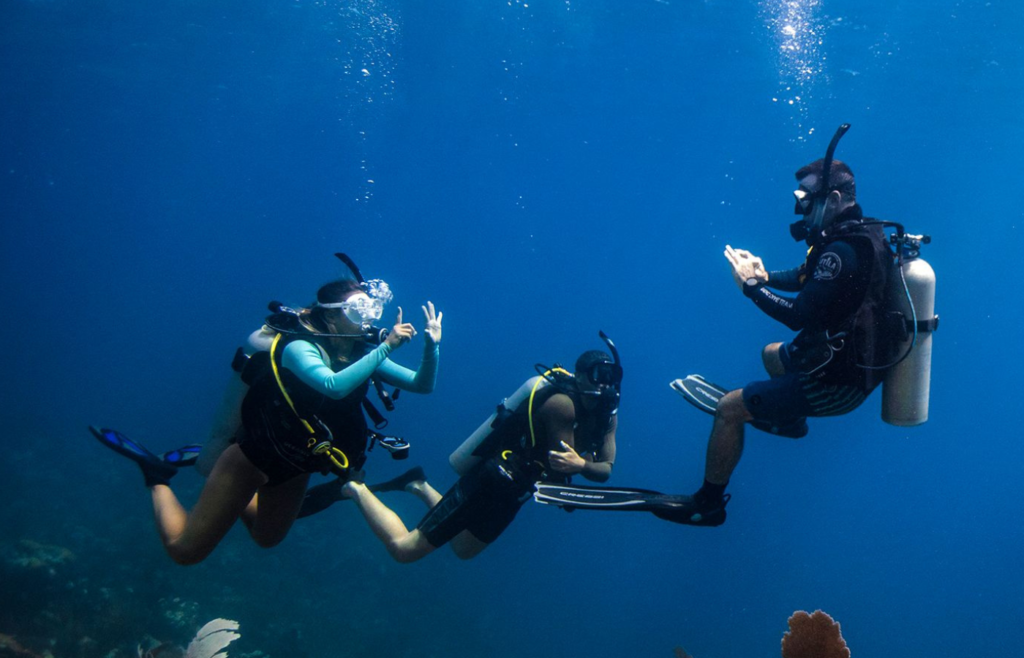
The fourth day of PADI Open Water Course is the day you conclude all your training with the confidence and excitement of beginning your journey to the underwater world. This is where you demonstrate your mastery of the skills learned and embrace the spirit of exploration.
Open Water Dive 3: Advanced Skills and Deeper Exploration
By this day, pre-dive preparations have become a routine activity before each and every dive by this point, After the pre-dive check up with confidence, you’ll descend deeper, using the five-point method, relying solely on visual cues to guide you. It’s time to show your refined skills:
- Skillfully inflating your BCD orally to achieve neutral buoyancy and maintain a steady hover.
- Clearing a fully flooded mask, ensuring clear vision underwater.
After demonstrating these abilities, the dive shifts to exploration. With your air consumption and buddy system checks habitual, followed by an ascent using the five-point method.
Open Water Dive 4: The Concluding Dive
Dive 4 is where you bring everything you’ve learned together:
- The pre-dive ritual is performed as trained
- Descent is initiated with the five-point method—this time, without any direct reference, a true test of your diving knowledge.
Unlike previous dives, Dive 4 doesn’t focus on formal skills. Instead, you get to practically use all your diving knowledge yourself in the dive experience, putting into practice the underwater navigation techniques you’ve learned, while still under the careful supervision of your instructor.
List of Skills in Summary
Throughout your PADI Open Water Course, you’ll be systematically learning and practicing a comprehensive set of skills essential for safe and enjoyable diving. Here’s what you’ll be mastering:
- Dive Equipment Assembly & Disassembly
- Put on dive equipment using proper technique
- Buddy Check
- Giant Stride Entry
- Inflate/Deflate BCD at the Surface
- Mask Removal & Replacement, Partially Flooded Mask, Fully Flooded Mask, No Mask Breathing Surface, No Mask Swim
- Snorkeling
- 5 Point Descent Over Sensitive Bottom, 5 Point Ascent
- Regulator Clearing Two Methods, Regulator Removal & Recovery, Snorkel to Regulator Exchange, Free Flowing Regulator for 30 Seconds
- Alternate Air Source Stationary for 30 Seconds, Alternate Air Source Swim for 1 Minute (with a buddy)CESA – Controlled Emergency Swimming Ascent
- Swim Maintaining Buoyancy
- Air Check
- Skin Dive
- Air Depletion & Signal
- Cramp Release at the Surface (with a buddy)
- Neutrally Buoyant (Fin Pivot LPI – Optional)
- Cramp Release Underwater (with a buddy)
- Hover for 30 seconds
- Tired Diver Tow 25 Meters
- Scuba Unit Removal & Replacement at the Surface
- Hover Orally Inflate for 1 Minute, Orally Inflate the BCD at the Surface
- Emergency Weight Belt Drop, Weight Belt Removal and Replacement Underwater
- Scuba Unit Removal and Replacement Underwater
- PADI Mini Dive
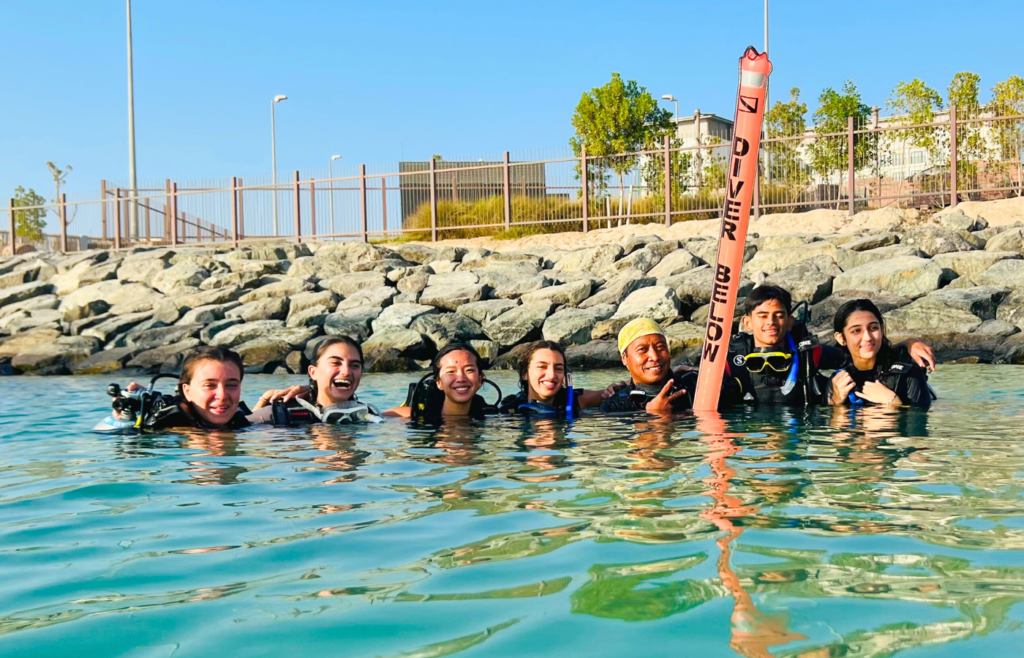
Certification: Your Passport to the Underwater World
The moment you surface from your final dive, you’re no longer just a student —you’re a certified PADI Open Water Diver. It’s a significant leap, one that your instructor acknowledges with a proud sign-off on your dive log. This isn’t just a pat on the back; it’s a confirmation of your newfound mastery over an environment that few get to know in their life. With this, you’ll receive your PADI e-license, a digital token of your permanent membership in the diving community, a true passport to the underwater world across the globe. Unlike other certifications that may require renewals or have expiry dates, your open water credential is a lifelong companion on your journey through the depths.
Beginning of a Lifetime Adventure
As you step into your future with your PADI certification in hand, remember that you’ve unlocked a world that many will never experience. The Open Water Course was just the beginning, your dives during the course were just the first of many, each bubble trail marking your path into the silent world below. Whether it’s exploring local shipwrecks or drifting over vibrant coral reefs in tropical waters, your adventures have just begun. Welcome to the diving community, a group of adventurers and dreamers who look below the surface for their next great discovery. Dive in whenever you’re ready—the ocean awaits.

